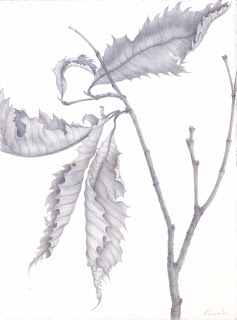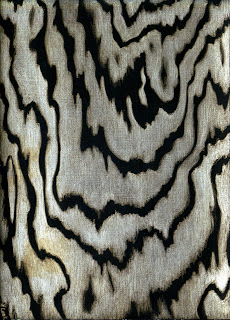It is always fascinating to realise how one evolves as an artist. I am constantly surprised at how things change, whilst the core impulses and responses remain consistent.
I was reminded of this yesterday as I found myself responding to the intricate beauty of ancient olive trees and mighty Mediterranean pines in a way that I would not have done a year or two ago.
Yes, I love trees, and have always found them of intense interest and delight. But now, with my eyes more attuned to their texture and patterning of wood and bark because of the way I am frequently drawing in metalpoint, I “see” differently. And more than that, I find myself learning more and more adapting and moving to a very selective mode of drawing en plein air.
There is an interesting passage in a book I read some time ago, Monet by Robert Gordon and Andrew Forge, published by Abradale Press in 1989. Discussing painting (and by extension drawing) en plein air, “To paint directly, to follow the rules of the plein air game, means to start with what is given from a particular position. Studio painting avoids occlusion problems (i.e. one near form hiding another behind it), but plein air means you have to choose your position and you have to deal with being blinded by overlapping features.”
Where you chose to stand or sit, what details you pay attention to: these are critical decisions for the artist to make at the onset of a work of art. The passage in Monet gives the example of a view down a straight road.
It establishes the visible world in depth at the same time that it establishes the position of the observing eye. It defines the relationship between seer and the seen within a geometrically precise structure.
Every time now that I start a metalpoint drawing, I need to decide on my position – where I am going to sit. This determines the details that visually jump out at me amid the welter of detailed information on the patterned bark of a tree, for instance.
Those selections dictate the “geometrically precise structure”, the composition that I have in mind (although that tends to evolve as I work). It also means that I have to “prune away” details that will not fit nor strengthen the drawing towards which I am almost instinctively groping.
It is indeed ideally a rather instinctive, non-conscious-thinking mode that I hope to achieve because I find that is when the best drawing happens. Not always possible, alas!
These are some of the more recent choices I made whilst sitting in front of mighty trees as to where I sit and what details are thus predominant and visible.
The rules of the plein air game become paramount.













